2.5 Gigabit vs. 10 Gigabit: Why 2.5 Gbe Might Be the Best Choice for Your Network
Last Updated on March 3, 2024
If you're looking to upgrade your home or small business network, you've probably encountered the debate between 2.5 gigabit Ethernet and 10 gigabit Ethernet. Traditionally, 1 gigabit (1 Gbps) has been the standard, but 2.5 and 10 gigabits offer a serious boost in speed. 10 gigabit might seem like the obvious winner, but there's a strong case for 2.5 gigabit being the smarter, more practical choice for many.
Let's break down the pros and cons of each and figure out if 2.5 Gbe could be the unsung hero of your network upgrade.
Table of Contents
Key Takeaways
| Feature | 2.5 Gigabit | 10 Gigabit | What it Means |
|---|---|---|---|
| Speed | 2.5x faster | 10x faster | Significant boost vs. 1 Gbps, but 10G is overkill for most |
| Cost | More affordable | More expensive | Budget-friendly vs. Premium investment |
| Compatibility | Works with Cat5e | Often needs Cat6+ | May save you from rewiring your home/office |
| Power Draw | Lower | Higher | Cooler operation, better for mobile devices |
Key Advantages of 2.5 Gigabit Ethernet
When it comes to upgrading your network, there are several compelling reasons to give 2.5 gigabit Ethernet serious consideration:
Cost-Effectiveness
Perhaps the most significant advantage of 2.5 gigabit Ethernet is its affordability compared to 10 gigabit setups. 2.5G switches, network adapters, and even compatible cables tend to be significantly cheaper than their 10G counterparts. This can mean considerable savings, especially if you're upgrading multiple devices.
Leveraging Existing Infrastructure
If your home or office is already wired with Cat5e cabling (a common standard), there's a good chance you won't need to upgrade for 2.5 gigabit speeds. This saves the considerable expense and hassle of rewiring your entire space. 10 gigabit, on the other hand, often requires Cat6 or Cat6a cabling for reliable operation. If the cables in your walls look like standard phone cables, there's a good chance they're Cat5e.
Power Efficiency
10 gigabit network components are notoriously power-hungry. This is especially noticeable in adapters for laptops and smaller devices, which often get quite hot due to the extra power draw. 2.5-gigabit devices are far more energy-efficient, making them a better choice for mobile devices or setups where power consumption is a concern. Lower power use also translates into less heat your network equipment generates, potentially extending its lifespan.
Simplicity and Ease of Use
You'll find a wider range of affordable 2.5 gigabit adapters that use standard USB-C or USB-A connections. These work with most modern computers right out of the box. In contrast, 10G adapters frequently require a Thunderbolt 3 port, limiting compatibility. Plus, 2.5G often doesn't require the bulky active cooling solutions you'll find on 10G equipment.
When Does 10 Gigabit Make Sense?
Despite the compelling advantages of 2.5 gigabit, there are still situations where the raw speed of 10 gigabit makes it a worthwhile investment:
Extremely Large File Transfers
If you regularly work with massive files (think multi-gigabyte video projects, huge datasets, etc.), the extra speed of 10 gigabits can noticeably reduce transfer times. This extra speed is especially beneficial when frequently moving data between a powerful computer and a high-performance Network Attached Storage (NAS) device.
Enterprise and Data Center Environments
Businesses with mission-critical, bandwidth-intensive applications often rely on the guaranteed speed and capacity of 10 gigabit networks. It remains the more common standard for large data centers and enterprise-level operations.
Let's be realistic, though – most of us don't consistently handle files or workloads so massive that they saturate a 2.5G connection.
Is 2.5 Gigabit Enough? Real-World Use Cases
4K Video Editing
For most video editors, even those working with multiple streams of 4K footage, 2.5 gigabit provides ample bandwidth. You can smoothly transfer files to and from your NAS and experience responsive playback in your editing software. Only those working with extremely high-bitrate formats (like 8K RAW) or complex multi-camera setups might find 10G necessary.
NAS File Transfers (Photos, Home Videos)
If you store your photo library, home videos, and other files on a NAS, a 2.5G network delivers a significant upgrade from standard gigabit Ethernet. Moving large files around your network becomes much faster, saving you valuable time.
Gaming and Streaming
Unless you're a professional competitive gamer demanding the absolute lowest latency or streaming multiple high-resolution video feeds simultaneously, 2.5 gigabits will likely exceed your needs. Most online games and HD/4K streaming services perform well over a 2.5G connection.

Expert Insight: Why 2.5G Often Makes Sense for Businesses
With 20 years of experience deploying network infrastructures at iFeeltech IT Services, I've seen firsthand that 1 gigabit networks remain sufficient for most business operations. Your internet connection usually caps out around 1 Gbps, which is already a great speed for small and medium-sized businesses.
However, the world of networking is evolving rapidly. Multi-gigabit internet services (like AT&T's 5 Gbps fiber) are becoming more accessible. This drives the need for faster internal networks to keep up. The latest Wi-Fi 7 access points, like the Unifi U7, boast 2.5 Gbps uplinks. That means with the right setup, you could achieve incredible wireless speeds that rival traditional wired connections!
Do most businesses need this kind of speed today? Probably not. But if you're passionate about cutting-edge technology and future-proofing your network, 2.5 gigabit offers a compelling upgrade path.
Additional Considerations
Compatibility
Not all networking equipment supports 2.5 or 10 gigabit speeds. If you plan an upgrade, ensure your switches, routers, and devices you want to connect directly are compatible with these newer standards. Luckily, multi-gig switches are becoming increasingly common and affordable.
The Future of Networking
As technology progresses, 2.5 gigabit (and the related 10 gigabit standard) could become even more widespread. This has the potential to drive down costs further and increase compatibility, making it a smart investment for future-proofing your network. It's worth considering that by the time the average user truly needs the full speed of 10G, the prices of 10G hardware may have significantly decreased.
Conclusion
Choosing the right network speed depends on your individual needs and budget. While 10 gigabit Ethernet offers unbeatable top-end performance, 2.5 gigabit Ethernet hits a sweet spot for many home users, enthusiasts, and small businesses. It provides:
- A significant speed boost over traditional gigabit connections.
- Excellent cost-effectiveness.
- Compatibility with existing infrastructure.
- Lower power consumption and easier setup.
If you want to significantly enhance your network performance without breaking the bank or facing the complexities of a 10 gigabit setup, 2.5 gigabit Ethernet deserves your serious consideration.
FAQ
My internet is only 1 Gbps. Why bother with anything faster?
Faster speeds on your local network significantly improve file transfers between your NAS, computers, and other connected devices, even with slower internet.
Will 2.5G make my games run better?
For most online games, not hugely, but downloading large game updates or streaming your gameplay will be much snappier with 2.5G.
Can I use 2.5G with my existing router?
This depends on the router. Check if yours has any ports labeled “2.5Gbe,” “Multi-gig,” or similar. If not, consider upgrading your router to fully utilize 2.5G speeds on your network.
Do I need to upgrade my cables for 2.5G?
Chances are good that your existing Cat5e cables will handle 2.5G speeds just fine. If you have very old cabling or need extremely long runs, Cat6 might be a safer choice.
Is 2.5G overkill for gaming?
While a direct wired connection is still optimal for competitive gaming, 2.5G is more than enough for most gamers, especially for downloading large game files and smooth streaming.
How can I tell if my computer needs a 2.5G adapter?
Check your computer's specs for a 2.5Gbe Ethernet port. If unsure, look for a Thunderbolt 3 port (needed for many 10G adapters but not essential for most 2.5G ones).
Best 2.5G NAS for video editing?
Look for a NAS with a 2.5G or faster Ethernet port, sufficient drive bays, and a powerful processor. Consider factors like your editing software and whether you work with 4K or higher-resolution video.
Glossary
-
Bandwidth: The amount of data that can be transferred over a connection in a given time. Imagine it as the width of a highway – more bandwidth allows for more simultaneous traffic.
-
Bottleneck: A point in your network that limits overall speed. This could be a slow device, outdated cables, an underpowered router, or a congested Wi-Fi connection.
-
Cat5e/Cat6a: Types of Ethernet cables with different speed capabilities. Cat5e is common in older installations and often sufficient for 2.5G speeds, while Cat6a might be needed for 10G in certain situations.
-
Crossover Cable vs. Patch Cable: Ethernet cable types with slightly different internal wiring. Most modern network equipment auto-detects, but it's a term someone upgrading might encounter.
-
Gbps: Gigabits per second, a measure of network speed.
-
IPv6: The latest version of the Internet Protocol, gradually replacing older versions (IPv4). Ensures compatibility with the ever-growing number of network devices.
-
Jumbo Frames: An advanced Ethernet setting that allows for larger data packets. It can improve efficiency on some 2.5G + networks, especially for transferring large files.
-
Latency: The slight delay in communication, often measured in milliseconds. Lower latency is crucial for real-time applications like gaming or video calls.
-
Link Aggregation: Combining multiple Ethernet ports to increase bandwidth. A more advanced feature relevant for maximizing high-speed setups.
-
Mesh Networking: A way to extend Wi-Fi coverage using multiple interconnected access points, creating a seamless, large-area wireless network.
-
NAS (Network Attached Storage): A dedicated file server for your home or business. Provides centralized storage accessible to all devices on your network.
-
PoE (Power over Ethernet): The ability to provide data and power to devices (like access points or security cameras) using a single Ethernet cable.
-
QoS (Quality of Service): A feature on some routers and switches lets you prioritize specific types of network traffic (like video streaming or gaming) for optimal performance.
-
Uplink: The connection between a network device (like an access point) and the wider network (often your router or main switch).
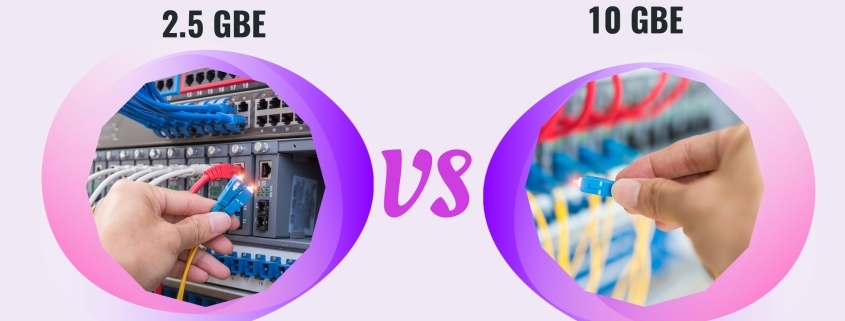
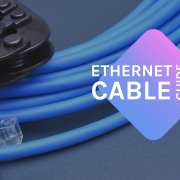

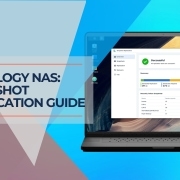
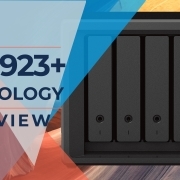
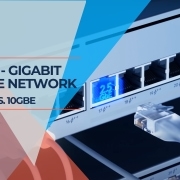

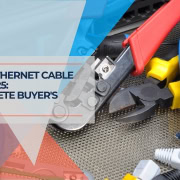



Leave a Reply
Want to join the discussion?Feel free to contribute!